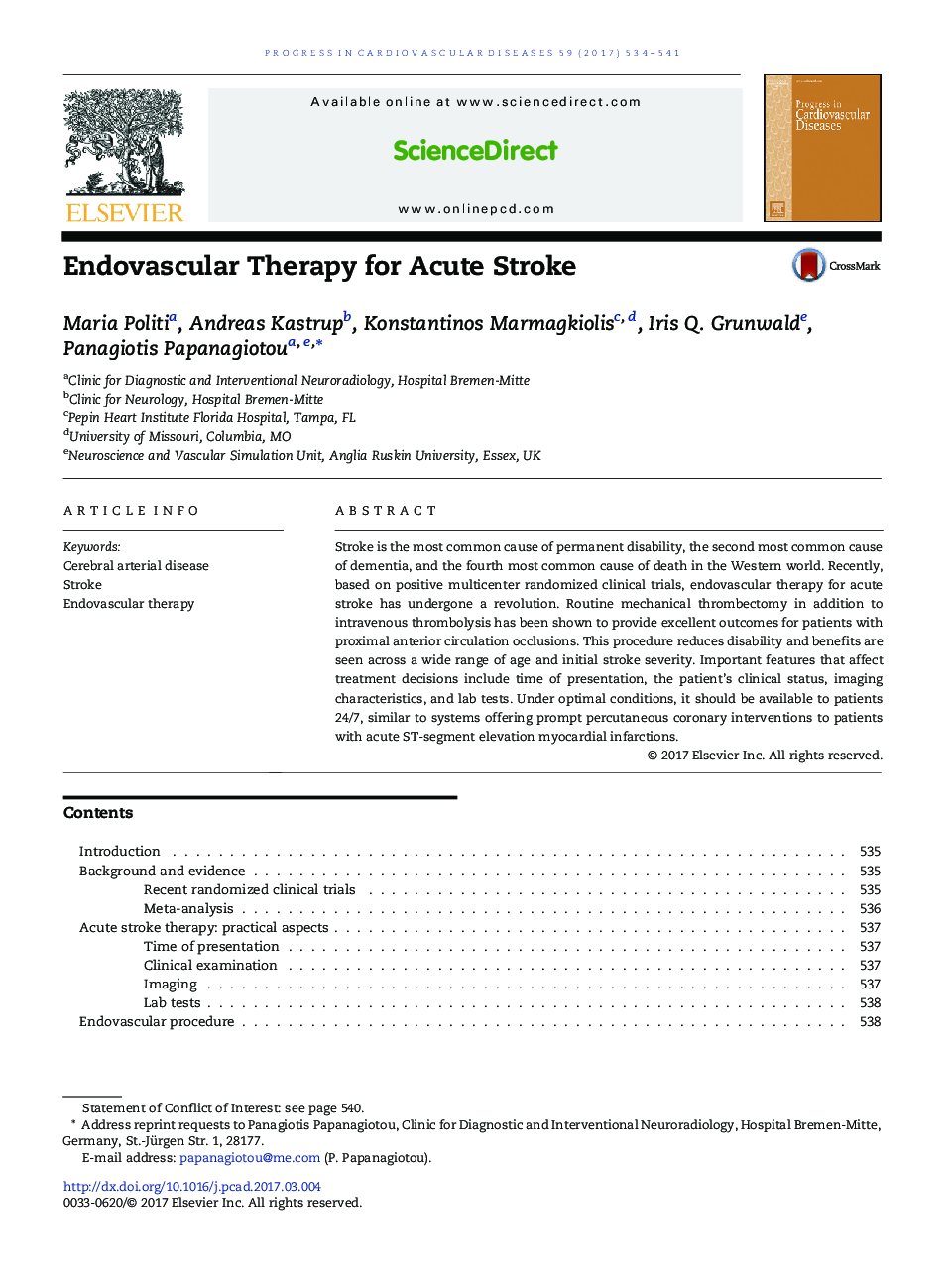| کد مقاله | کد نشریه | سال انتشار | مقاله انگلیسی | نسخه تمام متن |
|---|---|---|---|---|
| 5619556 | 1406075 | 2017 | 8 صفحه PDF | دانلود رایگان |
Stroke is the most common cause of permanent disability, the second most common cause of dementia, and the fourth most common cause of death in the Western world. Recently, based on positive multicenter randomized clinical trials, endovascular therapy for acute stroke has undergone a revolution. Routine mechanical thrombectomy in addition to intravenous thrombolysis has been shown to provide excellent outcomes for patients with proximal anterior circulation occlusions. This procedure reduces disability and benefits are seen across a wide range of age and initial stroke severity. Important features that affect treatment decisions include time of presentation, the patient's clinical status, imaging characteristics, and lab tests. Under optimal conditions, it should be available to patients 24/7, similar to systems offering prompt percutaneous coronary interventions to patients with acute ST-segment elevation myocardial infarctions.
Journal: Progress in Cardiovascular Diseases - Volume 59, Issue 6, MayâJune 2017, Pages 534-541
